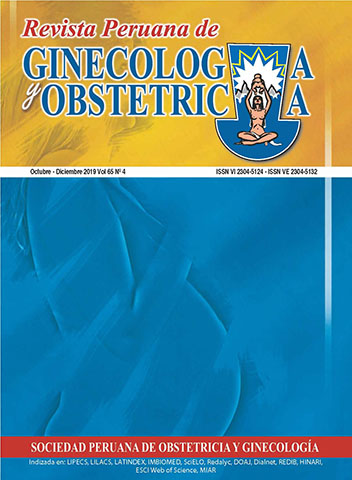Second trimester uterine rupture due to placenta accreta in pregnant woman with previous uterine compression suture
DOI:
https://doi.org/10.31403/rpgo.v65i2217Abstract
Postpartum hemorrhage can be a life-threatening condition. Successful approaches have been described using uterine compression sutures to control postpartum hemorrhage, in some cases by a combination of techniques. Procedures to reduce blood loss consist of uterine massage, medical treatment, uterine tamponade and hysterectomy. The uterine compression suture, or B-Lynch technique, has been proposed to control postpartum hemorrhage in such cases of uterine atony, preserving fertility. Although report of complications of this procedure is scarce, the appearance of necrosis, pyometra, uterine rupture and, more recently, exaggerated and abnormal invasion of the placenta (placenta accreta) in a subsequent pregnancy has been described. It is necessary to inform patients on potential complications of the procedure and the need of postoperative follow-up to confirm their absence. We present a case of second trimester uterine rupture due to placenta accreta in a patient with previous uterine compression suture.Downloads
Download data is not yet available.
Downloads
Published
2019-10-02
How to Cite
Reyna-Villasmil, E., Torres-Cepeda, D., & Rondon-Tapia, M. (2019). Second trimester uterine rupture due to placenta accreta in pregnant woman with previous uterine compression suture. The Peruvian Journal of Gynecology and Obstetrics, 65(4), 533–536. https://doi.org/10.31403/rpgo.v65i2217
Issue
Section
Casos Clínicos
















